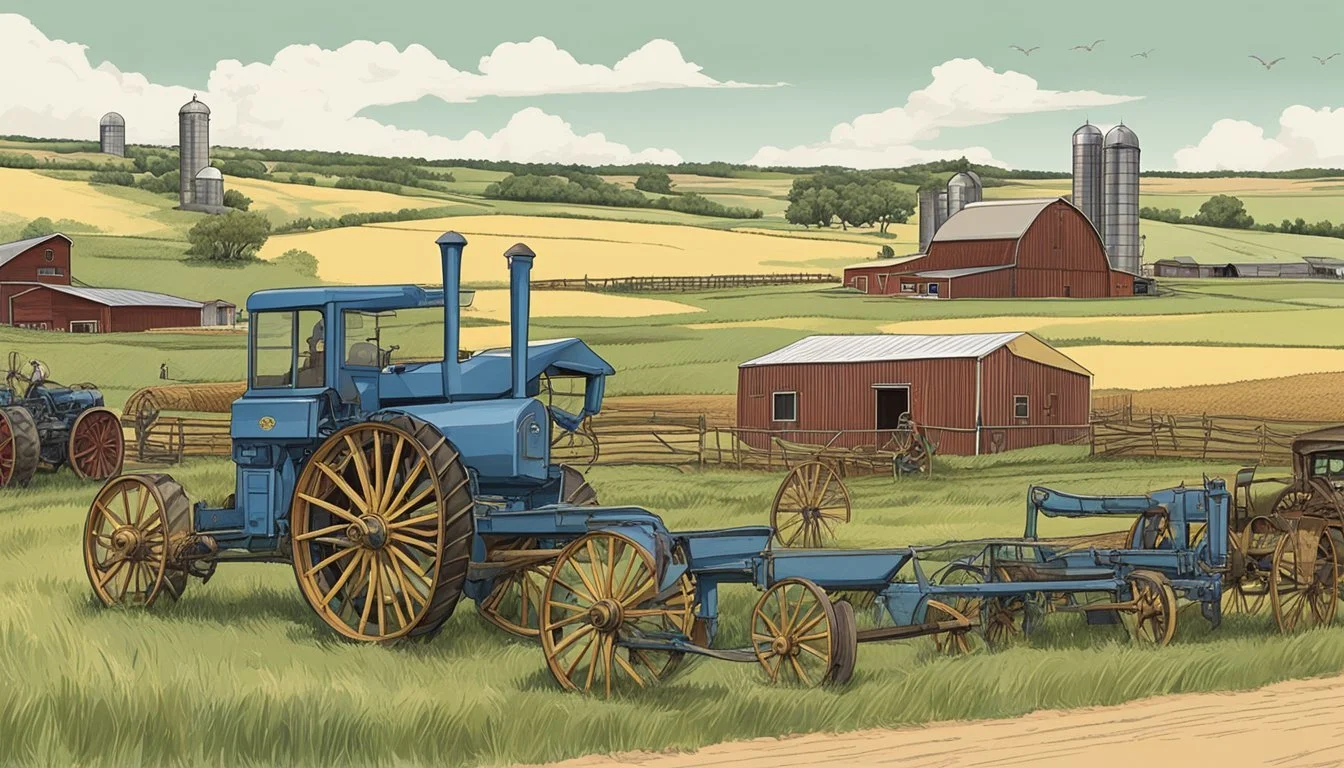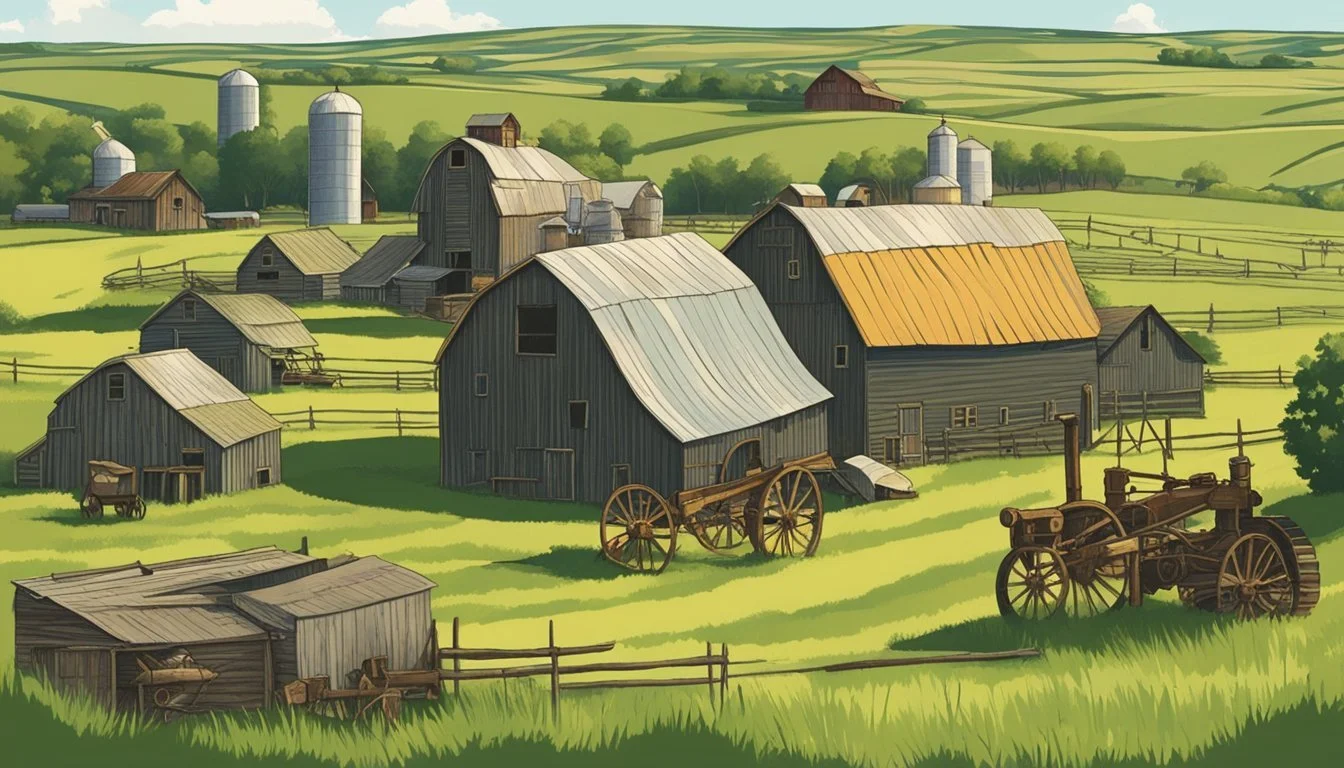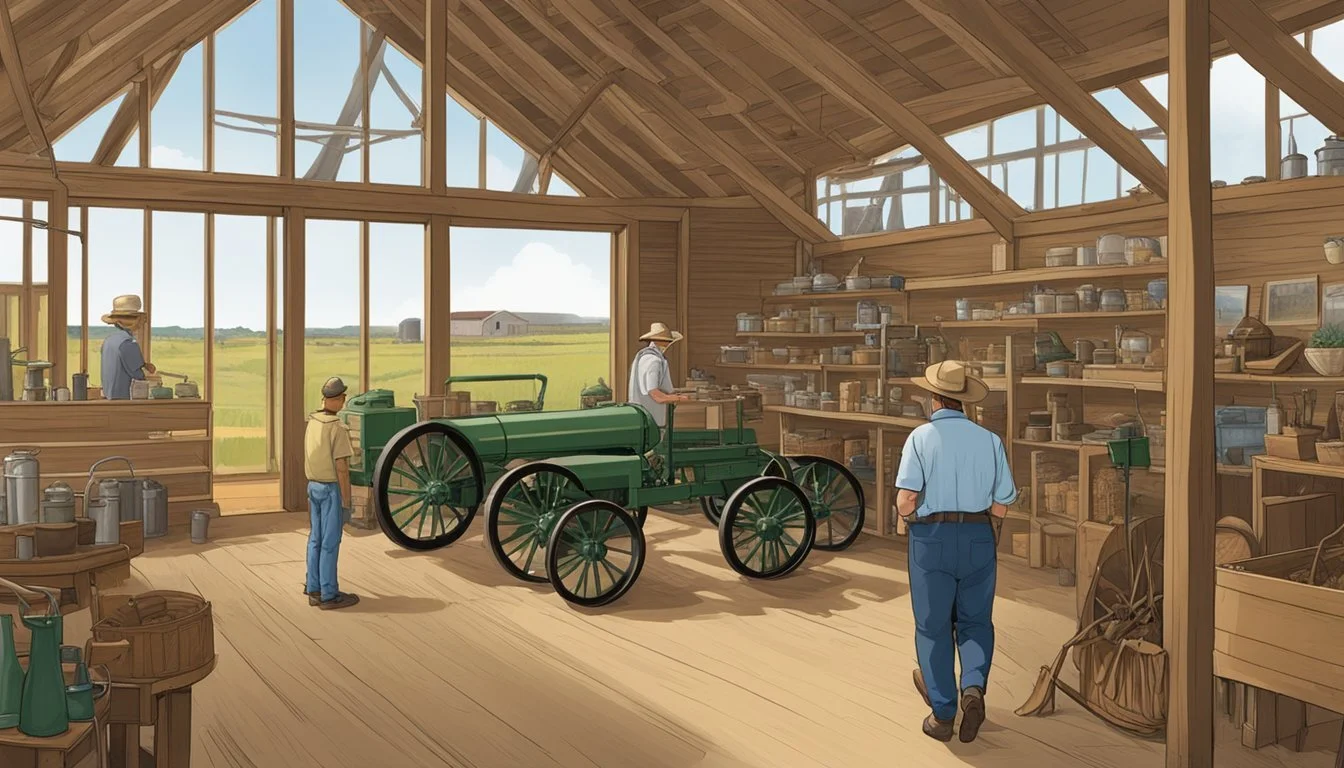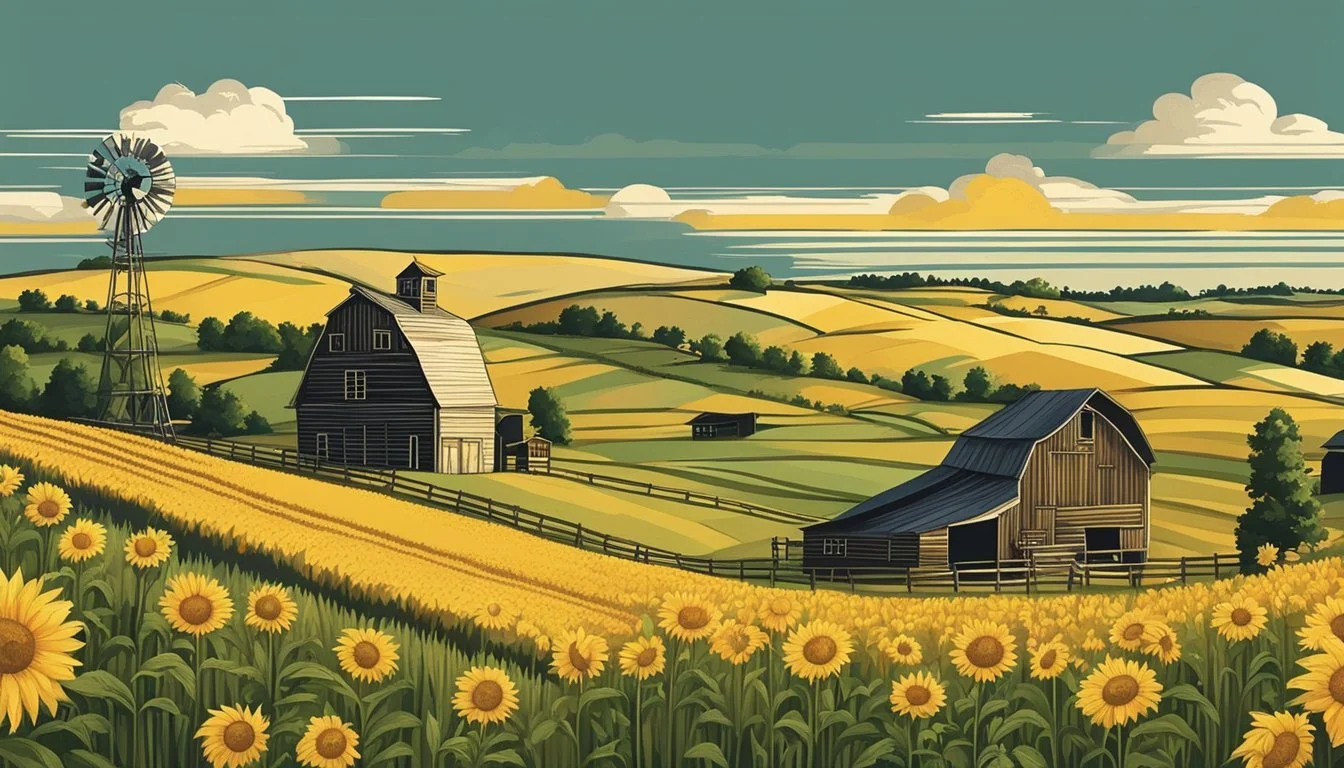Historical Farms and Agricultural Museums in North Dakota
A Guide to Rural Heritage
North Dakota's rich agricultural heritage is preserved and showcased in various historical farms and agricultural museums across the state. These sites offer a window into the past, presenting a narrative that intertwines the land's history with the cultural strides made in farming and rural life. Visitors to these places have the opportunity to engage with exhibits that detail the evolution of agriculture, from the early indigenous practices to modern advancements. These historical farms and museums are critical in understanding North Dakota’s development and the role agriculture has played in shaping its identity.
Agriculture remains the backbone of North Dakota, with historic sites providing tangible links to the bygone eras of farming innovation and community. These museums and farms do not merely act as vessels of history; they also serve as active guardians of cultural heritage. Through a combination of original buildings, reconstructed sites, and interactive exhibits, these institutions educate the public on the various facets of agricultural life that have been integral to the state's growth and prosperity.
One can explore iconic locations such as the North Dakota Heritage Center & State Museum, where four galleries trace the geological formation of the region and its development over 600 million years. Additionally, the interactive experiences at places like Fort Abraham Lincoln State Park offer an immersive journey through significant historical periods. By engaging with these educational spaces, visitors gain a profound appreciation for the pioneering spirit that continues to influence North Dakota's agricultural landscape.
Overview of North Dakota Agricultural History
North Dakota has a rich legacy in agriculture, key to understanding both its economic development and cultural heritage. The state's historical farms exemplify the pioneer era while its museums preserve and interpret agricultural advancements.
Historic Farms and Homesteads
The landscape of North Dakota bears the imprint of many historic farms and homesteads, revealing stories of perseverance and adaptability. The Great Dakota Boom between 1878 and 1890 saw a massive influx of settlers establishing farms across the region. These farms not only transformed the state but also contribute to the historic character of the region.
Agricultural Museums and Heritage Sites
Agriculture's vital role in North Dakota's past is chronicled within the state's many museums and heritage sites. The North Dakota Heritage Center & State Museum stands out with extensive collections that narrate the evolution of farming practices, as well as showcasing agricultural innovation over more than 800 years, including crops introduced by Native Americans.
Key Events and Developments in Agriculture
Throughout North Dakota's history, agriculture has endured various transformations. Key events, such as the difficulties faced during the 1970s and 1980s, highlight the impact of global economics on the state's farming industry. Information about these historic challenges is captured in resources like the Summary of North Dakota History - Agricultural Economy document. This period, in particular, served as a reminder of the state's entwined fate with worldwide agricultural trends.
Historical Farms of North Dakota
North Dakota's agricultural heritage is richly depicted through the preserved historical farms and museums, providing a window into the rustic life and economic transformations that shaped the region.
Bagg Bonanza Farm
The Bagg Bonanza Farm in Mooreton stands as a testament to large-scale wheat farming practices from the late 19th and early 20th centuries. It is one of the few remaining bonanza farms of its size, well-preserved and complete with original buildings, including a sprawling main house, granary, and machine shop.
Bonanza Farms of the Red River Valley
In the fertile Red River Valley, the bonanza farms once covered thousands of acres, utilizing advancements in agricultural technology and the labor of numerous farmhands. These farms revolutionized the concept of agriculture on a grand scale, merging small homesteads into expansive wheat-producing operations.
Rural Life in the Early 20th Century
Exploring the past, one can visit various sites that offer an immersive experience into early 20th-century agriculture, complete with authentic farm equipment and barns. Interactive sites also provide hands-on activities to engage visitors in the historical aspects of North Dakotan farm life, from operating vintage machinery to touring restored houses that once stood as homes to pioneering farmers.
Agricultural Museums and Cultural Preservation
Cultural heritage and the preservation of agricultural history are critical aspects that museums in North Dakota are dedicated to maintaining. Through comprehensive collections and interactive exhibits, these institutions provide insights into the state's rich agricultural past.
North Dakota Heritage Center & State Museum
The North Dakota Heritage Center & State Museum stands out as the primary facility for honoring the state's agricultural legacy. The museum's expansive collection offers detailed historical records and artifacts that trace the evolution of farming and rural life in North Dakota. Visitors can explore various exhibits that highlight the state’s journey from the early days of agriculture to modern farming techniques.
Regional Historical Museums
Several regional historical museums across North Dakota, including the Billings County Museum and the Chateau de Mores State Historic Site, emphasize the local agricultural narrative. They house unique collections that showcase the tools, equipment, and personal stories that define the state's farming history. Fort Buford State Historic Site and Knife River Indian Villages depict the interaction of Native American heritage with agrarian practices, contributing to a holistic understanding of the region's cultural tapestry.
Living History and Open-Air Museums
Living history and open-air museums such as Fort Abraham Lincoln offer a dynamic approach to cultural preservation, enabling visitors to experience agricultural life as it was in the past. At the Ronald Reagan Minuteman Missile State Historic Site and Fort Union Trading Post, the focus is given to how agriculture has interacted with other facets of life in North Dakota, including military and trade activities. Traditional practices and routines are often reenacted at these sites, providing a vivid, tangible context for the state’s agrarian history.
Current State of Agriculture in North Dakota
Agriculture continues to be a driving force in North Dakota, leveraging advanced technology and educational outreach to ensure sustainable practices. The state's farms are a testament to the innovation and resilience that fuel today's agricultural industry.
Modern Farms and Technology
In North Dakota, modern farms integrate cutting-edge technology to enhance productivity and manage resources efficiently. Tractors equipped with GPS and automated systems are commonplace, revolutionizing how crops are planted and harvested. Farms in counties around Dickinson, Minot, Grand Forks, Fargo, and Bismarck have adopted these technological advancements to stay competitive.
For example:
Fargo: Utilizes drone technology for crop monitoring and health assessment.
Bismarck: Incorporates precision farming techniques to optimize soil management.
Educational Programs and Tours
The state offers various educational programs and tours to spread awareness of North Dakota's agricultural heritage. These initiatives provide hands-on learning experiences and foster appreciation for the industry's evolution. Agriculture-focused educational sites often collaborate with institutions to host students and interested visitors. Key locations include:
Grand Forks: Showcases farm machinery evolution with interactive displays.
Minot: Conducts guided tours that explain the importance of modern agricultural practices.
Conservation and Sustainable Practices
North Dakota farmers are committed to conservation and sustainable agriculture, ensuring that their cultural practices are environmentally friendly while maintaining crop and livestock productivity. Sustainable efforts are seen in:
Soil conservation methods employed in Dickinson to prevent erosion.
Water conservation techniques in practice across the Red River Valley to safeguard this precious resource.
Planning Your Visit
When visiting historical farms and agricultural museums in North Dakota, it is important to prepare for your trip by familiarizing yourself with available guides, upcoming events, and helpful visitor information. Ensuring a smooth experience can enhance your appreciation of North Dakota's rich agricultural heritage.
Museum and Historic Site Guides
The North Dakota Heritage Center & State Museum offers a comprehensive experience with four main galleries showcasing the region's history through artifacts and interactive exhibits. Prospective visitors can plan their museum visit by visiting the North Dakota Heritage Center & State Museum website for detailed guides on the various museum spaces, featuring specific attractions suited for both adults and children.
Events and Seasonal Activities
Regular events and seasonal activities provide a dynamic visit to North Dakota's historical sites. For the latest schedules, including Pop Up History events and special exhibits, checking the facility's events calendar is recommended. These activities are designed to engage visitors of all ages and usually revolve around the farming and agricultural history of the state.
Visitor Information and Accessibility Details
The museums operate within set hours, typically Monday to Friday from 8 a.m. to 5 p.m., and extended hours over the weekend. Detailed visitor information including directions, frequently asked questions, and accessibility details can be found on the museum's official webpage. Museum stores and libraries are accessible within the specified hours, and exhibits are catered to provide full accessibility for all guests, ensuring an inclusive and educational experience.
Additional Landmarks and Historical Context
In exploring the state's past, the interconnection of North Dakota's landscapes, its Badlands, and rich historical tapestry provide a comprehensive understanding of regional development, from geological shifts to cultural evolutions.
North Dakota's Badlands and National Parks
The rugged beauty of North Dakota's Badlands is eloquently showcased in Theodore Roosevelt National Park. These lands—characterized by steep canyons, rocky layers, and rolling grasslands—offer a glimpse into significant natural history and geologic formation. The park honors the 26th U.S. President for his conservation efforts and provides insights into the area's ranching history, which influenced his life and policies.
Local History and Geology
North Dakota's geological narrative is captured at the North Dakota Heritage Center & State Museum. The museum's exhibits delve into a variety of subjects including the state’s rich fossil record, which contributes to understanding local geology. Their archives preserve essential elements of state and military history, ensuring that the narrative of North Dakota’s development remains accessible for future generations.
Native American Heritage
The Knife River Indian Villages National Historic Site stands as a testament to the Native American cultures that thrived along the Northern Plains. Here, visitors can explore earthlodge dwellings and trace the lifestyle of the Hidatsa, Mandan, and Arikara tribes. The site's history, encompassing both the cultural significance and daily lives of these indigenous peoples, is crucial for understanding the broader story of human settlement in North Dakota.
Conclusion
North Dakota's heritage is deeply rooted in agriculture, a testament to its enduring legacy. Institutions like the State Historical Preservation Office work diligently to maintain the state's rich agricultural history. Preservation efforts are crucial, ensuring that future generations understand the region's cultural significance and the role agriculture has played in shaping it.
In visiting the various historic sites and farms, one gains insight into the evolution of the state's economy. The transition from rural landscapes to more urban settings is not just a demographic shift but also a transformation of the state's economic backbone. The state's commitment to preservation is evident, further enriched by contributions from entities like the North Dakota State Historical Society museum in Bismarck.
Preservation is also about providing education and fostering appreciation for North Dakota's past. Historic sites such as the Fort Totten State Historic Site serve as perfect educational platforms, exemplifying how knowledge of the past is pivotal for cultural growth.
The state's agricultural influence is undeniable and remains interwoven with modern developments. Institutions across North Dakota continue to safeguard this invaluable cultural asset through meticulous preservation and education, ensuring that the state's agricultural legacy is well-preserved for future exploration and understanding.








